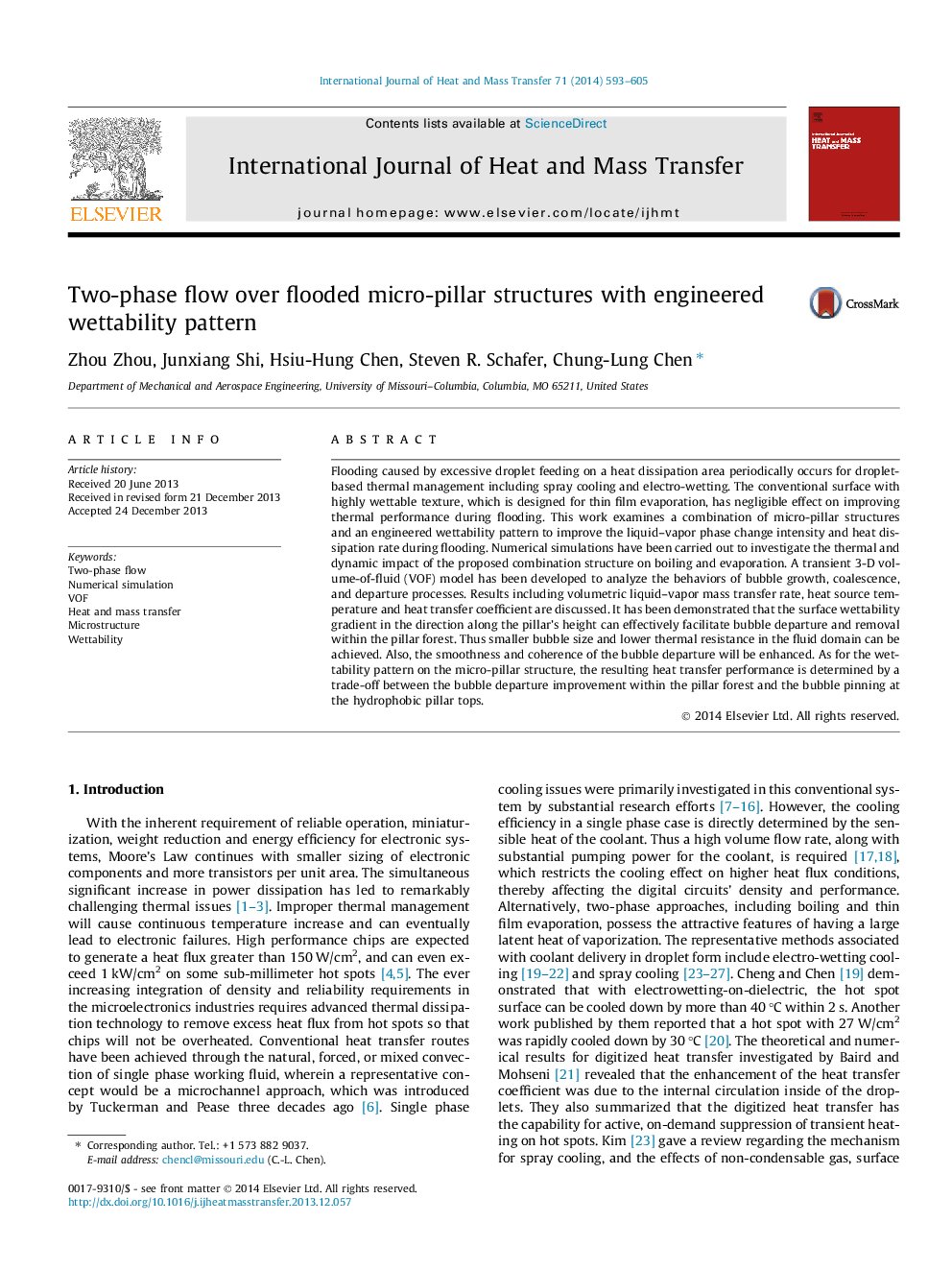| Article ID | Journal | Published Year | Pages | File Type |
|---|---|---|---|---|
| 7057735 | International Journal of Heat and Mass Transfer | 2014 | 13 Pages |
Abstract
Flooding caused by excessive droplet feeding on a heat dissipation area periodically occurs for droplet-based thermal management including spray cooling and electro-wetting. The conventional surface with highly wettable texture, which is designed for thin film evaporation, has negligible effect on improving thermal performance during flooding. This work examines a combination of micro-pillar structures and an engineered wettability pattern to improve the liquid-vapor phase change intensity and heat dissipation rate during flooding. Numerical simulations have been carried out to investigate the thermal and dynamic impact of the proposed combination structure on boiling and evaporation. A transient 3-D volume-of-fluid (VOF) model has been developed to analyze the behaviors of bubble growth, coalescence, and departure processes. Results including volumetric liquid-vapor mass transfer rate, heat source temperature and heat transfer coefficient are discussed. It has been demonstrated that the surface wettability gradient in the direction along the pillar's height can effectively facilitate bubble departure and removal within the pillar forest. Thus smaller bubble size and lower thermal resistance in the fluid domain can be achieved. Also, the smoothness and coherence of the bubble departure will be enhanced. As for the wettability pattern on the micro-pillar structure, the resulting heat transfer performance is determined by a trade-off between the bubble departure improvement within the pillar forest and the bubble pinning at the hydrophobic pillar tops.
Related Topics
Physical Sciences and Engineering
Chemical Engineering
Fluid Flow and Transfer Processes
Authors
Zhou Zhou, Junxiang Shi, Hsiu-Hung Chen, Steven R. Schafer, Chung-Lung Chen,
